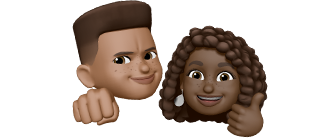Written by Willy Rodriguez (Cohort 9, 1st Award Winner)
The Salsa Museum is currently in its planning phase and we aim to open in 2028 in the Bronx, NY. Please follow our Instagram @intlsalsamuseum and visit our website www.internationalsalsamuseum.org for more information.
How it all started
Willy with his first keyboard at six years old
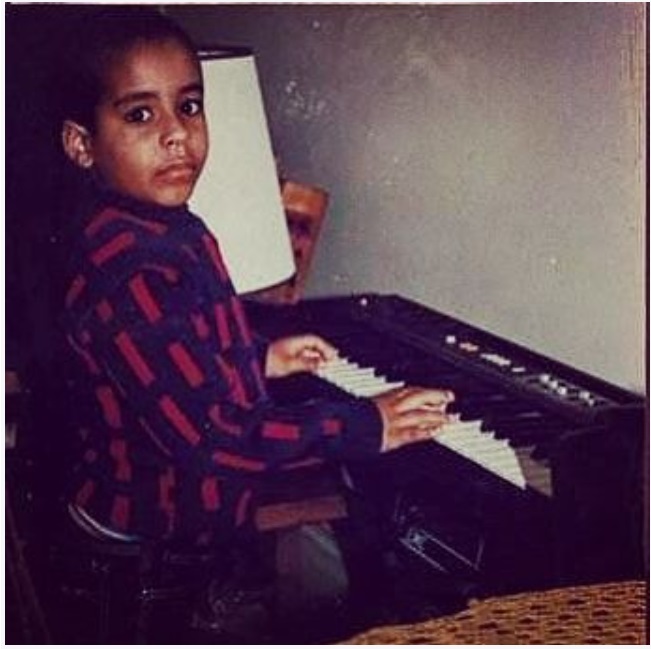
I will never forget the day my father bought me my first Casio keyboard.
It was April 1987, and I was five years old, sitting on the living room floor
playing with my toys when my father walked in from work carrying a huge box. As
he placed the box on our 1970s-style coffee table, I watched with excitement.
"Open it," he said. Filled with anticipation, I tore off the wrapping
and saw the keyboard inside. To his surprise, my tiny fingers started playing
"Happy Birthday" within minutes of the box being opened. After a
while, my father asked me, "Who taught you how to play that song?" I
shrugged my shoulders and replied, "I don't know," and kept on
playing. Fifteen minutes later, my father looked at me and asked, "Would
you like to take piano lessons?" Without hesitation and still focused on
playing "Happy Birthday," I looked up at him and said,
"OK." Who would have thought that by saying "OK" at the age
of 5, my life was completely going to change forever.
Music has always been an integral part of my life. It's the beans to my
rice, the sofrito to my pernil (roast pork), and the driving force behind
everything I do. From a young age, I was drawn to the piano and amazed by all
the other pianists I would see on TV. From Raul Di Blasio, Richard Clayderman,
and my inspiration Ramon Orlando. My father exposed me to various musicians. By
the age of ten, I was performing at a college level and competing in national
piano competitions at Carnegie Hall.
From Teen to Pro
Willy performing at sixteen years old
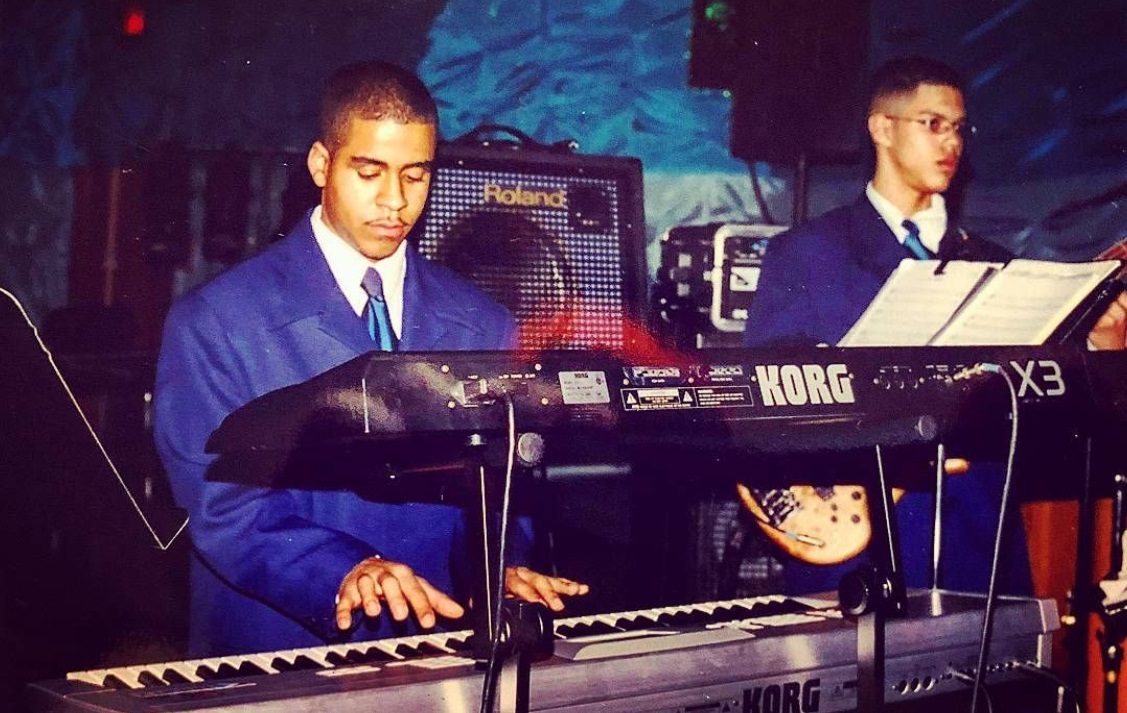
In 1996, I received a once-in-a-lifetime opportunity and was accepted
into the prestigious F.H. Laguardia High School of Professional Performing
Arts, also known as "The Fame School." During my time in high school,
I was introduced to a world of creativity that showed me that there were no
limits to what I could achieve artistically. Attending Laguardia was a turning
point in my life, igniting a passion for music and art that only grew stronger
as the semesters went by.
At the age of 14, a friend from Laguardia introduced me to Clave Azul, a youth band in Washington Heights. The group was made up of inner-city kids that had a love for all types of music. With Clave Azul, I was able to step outside of my classical music training and learn how to play Salsa, Bachata, Merengue, Hip Hop, and Jazz. Clave Azul not only helped me hone my musical skills but also taught me about the music business and what it takes to become a professional musician. We performed at various events throughout NYC. Out of all the performances we had, there was one particular performance that left an imprint in my heart, and till this day I still carry it with me. That was the first and only time I performed in front of the Queen, Celia Cruz.
The day I met Celia Cruz
Celia Cruz
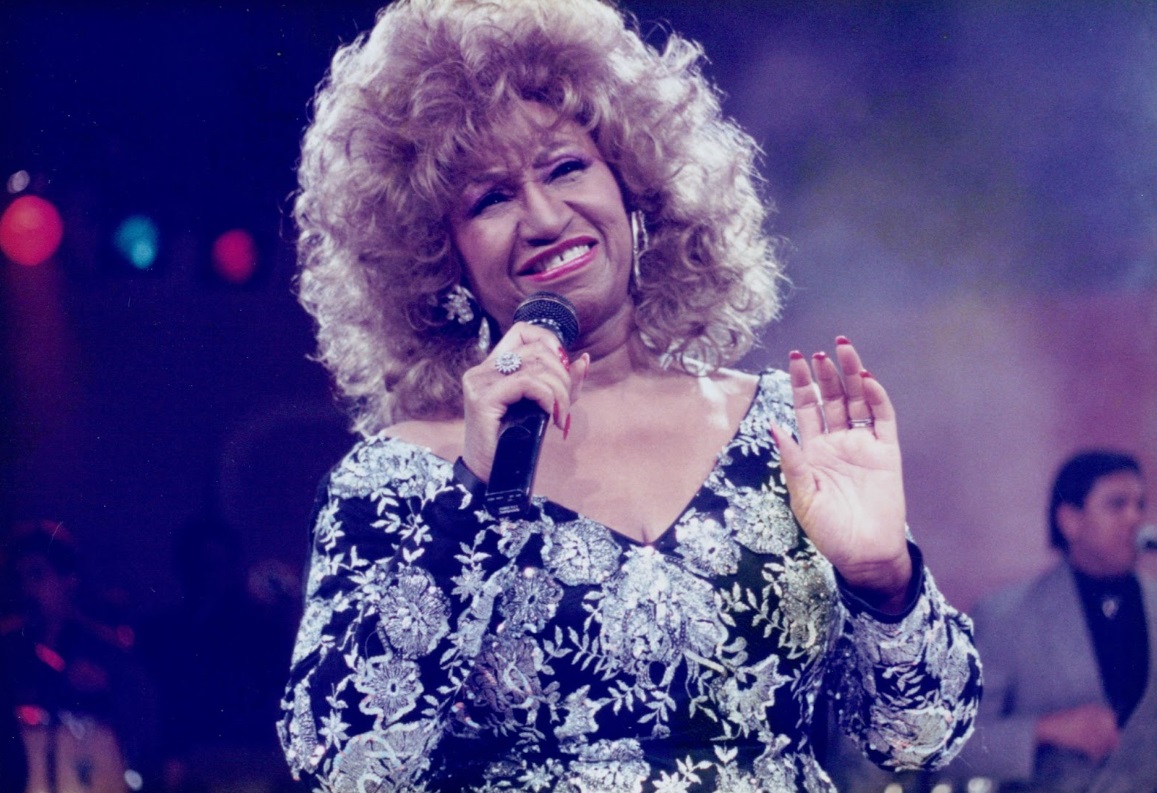
When I was 16 years old, my band Clave Azul performed at the Consulate
office of the Dominican Republic. We were thrilled to learn that the legendary
salsa artist Jose Alberto "El Canario" and Celia Cruz were going to
be in attendance, so we rehearsed a song to perform with Jose Alberto. After we
finished our song with Jose Alberto, we started playing another song that
featured a piano solo. I was very nervous because I knew that all eyes would be
on me. When it was time for my solo, I gave it my all, and from the corner of
my eye, I saw Celia Cruz getting up from her seat. She was dressed in all
yellow with big brown sunglasses, and she shouted "AZUUUUCARRRRRR"
while dancing to my solo. It was a moment that made all the hard work and
sacrifices I had made to practice and take lessons worth it.
As soon as the performance was over, Celia Cruz came up to me, gave me a big motherly hug, and looked straight into my eyes. She told me, "Tu vas a ser alguien bien grande cuando seas adulto" (You're going to be someone big when you become an adult). At that moment, I smiled and thanked her. Although I didn't fully comprehend what she saw in me at 16 years old, I always cherished her words and that moment in my life.
What I did know was that my purpose in life was becoming clearer: I was ready for the big leagues.
The Big Leagues
Performing at Lincoln Center
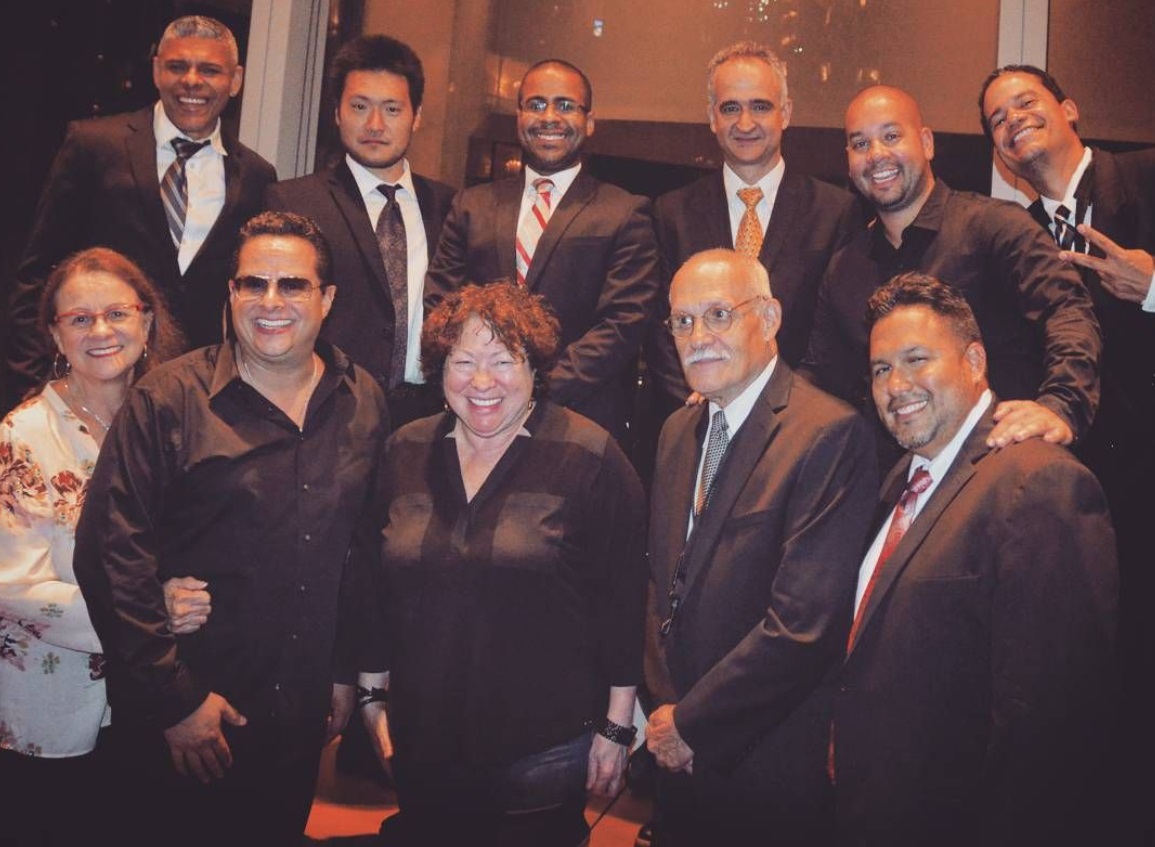
At the age of 17, I auditioned for a salsa group that would later become known as La Excelencia. La Excelencia started from humble beginnings, but through hard work and dedication, we gained recognition. We produced, arranged, and performed original music, and our audiences loved it. With La Excelencia, I was able to perform salsa music all over the world and meet people from all walks of life. From Norway to Cyprus, from Mexico to Istanbul, La Excelencia was gaining popularity. We shared stages with renowned artists such as Lauren Hill, Oscar De Leon, Gypsy Kings, Aventura, UB-40, Shaggy, Juan Luis Guerra, George Clinton, and many more.
Salsa music took me out of the hood and changed my perspective on music. Before, music was about chords, notes, arrangements, theory, and the music business. But after traveling the world and experiencing the magic that music can bring, my outlook on music changed. Music is about culture, people, love, unity, emotion, community, and joy. Music is life, and salsa music was at the very center of this discovery.
Working with Tito Puente Jr.
Willy with Tito Puente Jr. (right) and archival footage of Tito Puente (left)
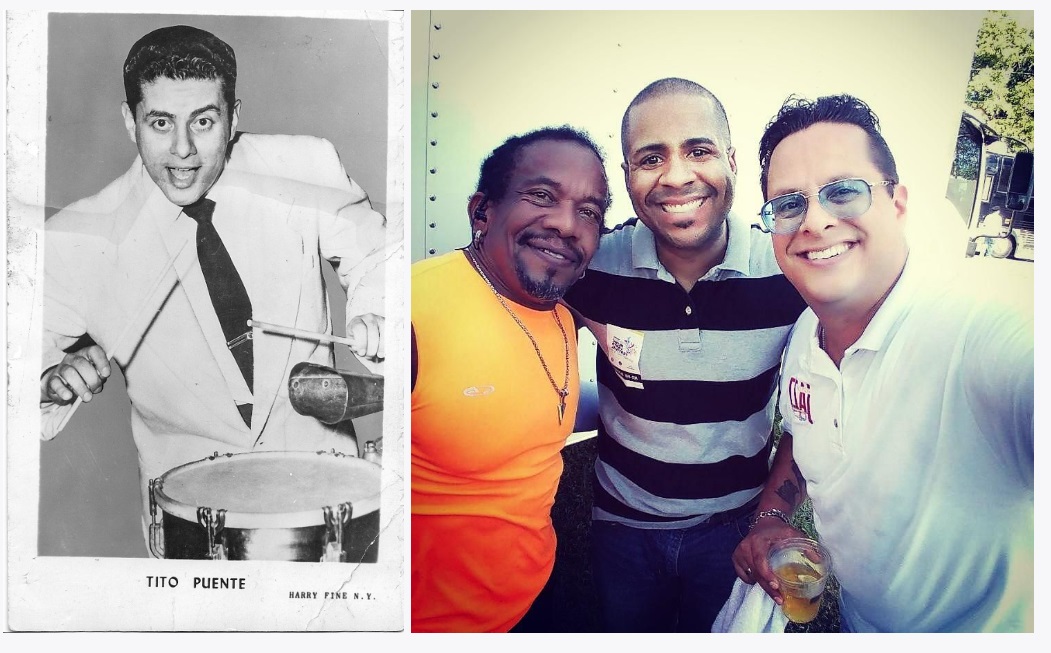
At 19 years old, I became La Excelencia musical director. While still working with La Excelencia, a man named James saw me performing at an NYC nightclub/restaurant called Gonzalez y Gonzalez. James was very impressed with my directing skills and approached me after my first set. He said, “My cousin is looking for a musical director. I would like for you to talk to him.” I asked, “Who is your cousin?” He stated, “Don’t worry about his name. He will give you a call on Sunday.” I simply replied, “OK” and got back on stage to perform my second set.
Sunday afternoon came around, and my phone rang. I picked up the phone and all I heard was, “Hello, this is Tito Puente Jr. My cousin James gave me your number. I have a gig coming up in Long Island, and I am looking for a musical director to put the band together. Can you do it?” I said, “Yes, I can.” I was extremely nervous because I had never directed a band of this caliber, and the music we were playing was directly from the files of the “King of Mambo, El Rey Del Timbal” Tito Puente.
There is a reason why he is called the King of Latin Music, and here I am at 19 years old about to lead his son’s band with his father’s original music. I said yes, not being sure if I could do this, but life has a way of presenting you with opportunities, and I was not going to miss out on this one. 21 years later, I am still his musical director, and this journey with Tito Puente Jr. has opened up another level of awareness when it comes to music. That is the history behind the music and appreciating the legacy of those musicians and artists that came before us and opened up the doors for us Latinos to walk through. Tito Puente Sr. was at the forefront of all of it, and here I am, like a kid in a candy store, learning about him and all the hard work he did to make sure that Latinos were represented through music.
Working with Tito Puente Jr. has not only taught me about his father’s
legacy, but I have also been able to sit down with musicians that played with
Tito Puente, Celia Cruz, Hector Lavoe, Fania All Stars, Ismael Rivera, Eddie
Palmieri, and the list goes on. At this point in my life, I have come to
realize that the universe has been prepping me for this moment. What started
off as a hobby at 5 years old grew into something more than what I could have
ever imagined, and that is the International Salsa Museum.
The Creation of the International Salsa Museum (ISM)
An early International Salsa Museum pop-up (left) and recent Press Conference (right)

The idea for the ISM was sparked by my Co-Founders Manny and Lily, who questioned the lack of a Salsa Museum in New York City, given that the genre originated in the streets of Spanish Harlem and the Bronx. Surprisingly, there is currently no museum dedicated to Salsa, a genre that has transformed the lives of people from all walks of life around the world. While there are museums dedicated to a variety of topics, from Hip Hop to Country music, from Food to clothing, Salsa music, which has its roots in African and Caribbean culture, is still overlooked. The International Salsa Museum is a necessary addition to the cultural landscape, especially for the Latino community worldwide.
This opportunity represents the culmination of my life's journey and passion, and has the potential to be life-changing not only for me but also for many others. The International Salsa Museum aims to create a space where music and culture intersect, and where the past meets the present, imparting knowledge to future generations for years to come.
The ISM will not only provide visitors with the opportunity to learn about iconic figures such as Tito Puente, Celia Cruz, La Lupe, Gilberto Santa Rosa, and Fania All Stars, but it will also serve as an educational platform where people from diverse backgrounds can learn about the music itself, from its creation to production and marketing. It is crucial to nurture new music and introduce fresh talent to the genre in order for it to survive. The museum will not only focus on the music, but also on the dance component, including various styles such as mambo, Cha Cha Cha, and Rumba just to name a few.
The creation of this museum will help build community, provide job opportunities, keep young people off the streets, inspire people to learn more about their culture, and empower them to dream big. The ISM will be a cultural hub where people of all ages and backgrounds can come together and enjoy the rich history of Salsa. I am delighted to be part of this journey, and I am confident that the legacy of our musical heroes will live on forever. Que Viva La Salsa!
The Salsa Museum is currently in its planning phase and we aim to open in
2028 in the Bronx, NY. Please follow our Instagram @intlsalsamuseum and visit
our website www.internationalsalsamuseum.org for more information.
- share
- Copy to URL
